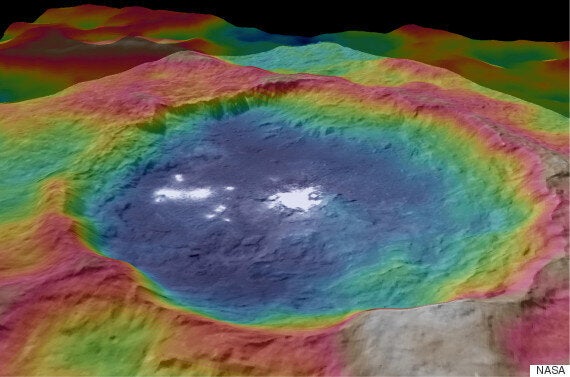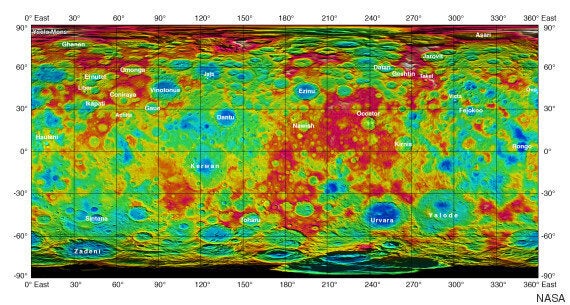If there is one thing that continues to baffle even NASA - it is the bright spots on Ceres, the dwarf planet.
This is despite the space agency acquiring a new map that shows off Ceres' surface in stunning detail.

The colour-coded map gives researchers a brilliant in depth view of the dwarf planet's surface features, which they haven't had access to before.
Alongside the mysterious spots, the images also show a "puzzling, cone-shaped 4-mile-high mountain."
While both these features are well known to NASA, researchers are hoping the fresh views will shed some light on how these puzzling characteristics form.
"The irregular shapes of craters on Ceres are especially interesting, resembling craters we see on Saturn's icy moon Rhea," said Carol Raymond, Dawn's deputy principal investigator based at NASA.
At the European Planetary Science Congress in Nantes, France, scientists speculated that the spots could be formed of salts, the BBC reports.

"We think that it's salt that has somehow made its way to the surface," said the mission's principal investigator Chris Russell.
"We're measuring the contours, trying to understand what the surface variations in that crater are telling us."
There is still hope that we will get to the bottom of this mystery as Dawn continues orbiting Ceres at an altitude of 915 miles.
SEE ALSO:
- NASA's Dawn Probe Reveals The 'Lonely Mountain' Of Ceres
- NASA Shows Ceres' 'Mystery' Bright Spots In Stunning Detail
- Ceres 'Lights' Baffling NASA: What Is Shining On Dwarf Planet's Surface?
- 'Dawn' Space Craft Approaches Dwarf Planet Ceres
- Ceres Looks Terrifyingly Sinister In NASA's Highest Resolution Image Yet
From October to December, the spacecraft will begin its descent into its lowest orbit at an altitude of 230 miles.
Ceres sits in an asteroid belt between Jupiter and Mars and NASA say the Dawn spacecraft will be operational till mid-2016.
Hopefully this will give us enough time to solve a few extraterrestrial mysteries.